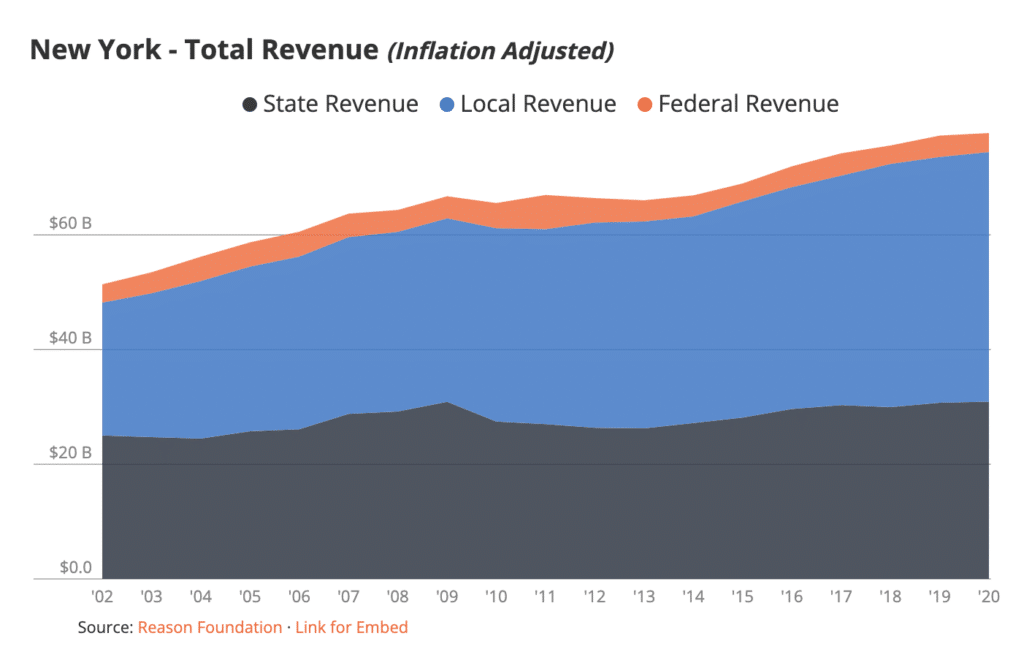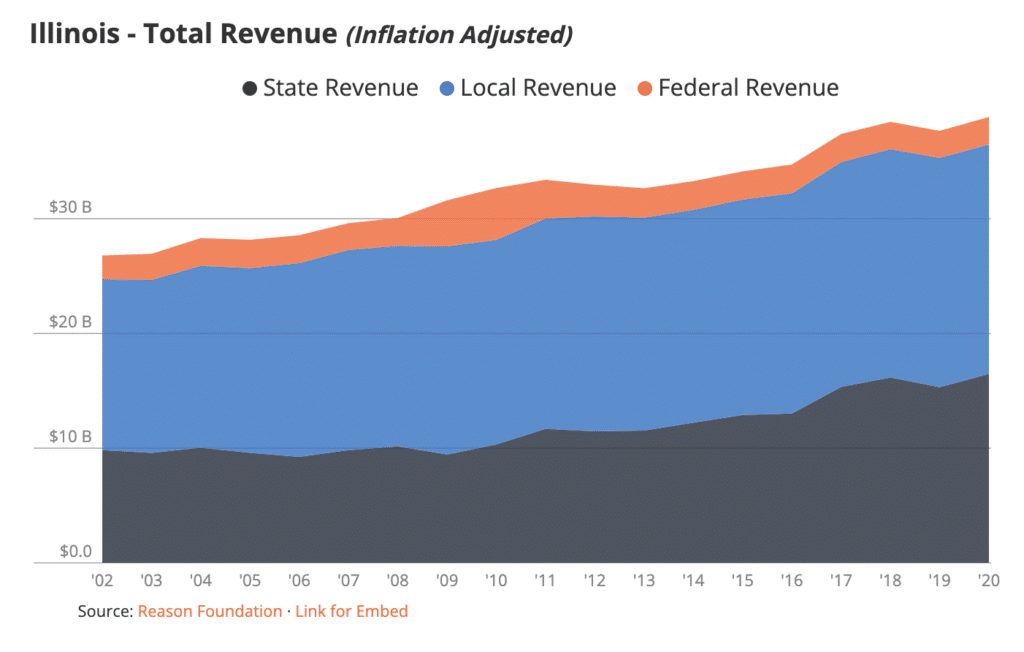The latest update to Reason Foundation’s K-12 Education Spending Spotlight provides a snapshot of K-12 education finance in all 50 states and the District of Columbia from 2002 to 2020. Based on the newest Census Bureau data available for the 2020 fiscal year, Reason’s Spending Spotlight shows how school spending and student enrollment changed before COVID-19 hit and the pandemic’s impact on both.
Between 2002 and 2020, 49 out of 50 states increased their inflation-adjusted per-pupil education spending. North Carolina was the only state that did not increase its inflation-adjusted education spending during that period.
On average, between 2002 and 2020, nationwide K-12 education spending increased by more than $3,200 per pupil, or by 25%.
Reason’s K-12 Spending Spotlight illustrates that many states increased their education funding even as they were losing students. In fact, 22 states experienced declining student enrollments between 2002 and 2020. Yet, all of those states losing students, except Michigan, increased their overall K-12 education inflation-adjusted education spending during that time.
For example, New York’s inflation-adjusted revenue increased by $26.4 billion between 2002 and 2020. This is a 51% increase in spending. Yet, New York’s overall K-12 student enrollment dropped by 11% during that time.

Similarly, Illinois’ K-12 enrollment has declined by more than 6% since 2002 but the state increased its per-pupil revenue by more than $7,100 in inflation-adjusted dollars between 2002 and 2020. In total, Illinois increased its inflation-adjusted education spending by $12 billion even though it was serving fewer students.

These examples illustrate a ubiquitous disconnect between education funding and student enrollment. For nearly 20 years, state policymakers have almost universally embraced policies that increased education funding regardless of how their state’s K-12 student population might be changing.
The COVID-19 pandemic has only accelerated existing enrollment declines in K-12 education. For instance, New York and California–home to the two largest public school districts in the nation–witnessed statewide enrollments decline by 5.9% and 4.4% respectively between 2020 and 2022.
Despite the drop in student enrollments during the pandemic, California policymakers recently approved increasing K-12 education funding by $9 billion for the 2023 school year–an increase of nearly 13%.
The enrollment declines in those states were not anomalous as the American Enterprise Institute’s Return to Learn Tracker pointed out, “Nineteen of 46 states declined by 3% or more and [only] five states saw net gains from 2020 and 2022.”
Families dissatisfied with their public school options during the pandemic chose alternative education options, such as homeschooling and private schools at record rates. In fact, the Associated Press reported that homeschooling participation increased by 63% during the 2020-21 school year, only dropping by 17% during the following academic year. At the same time, Catholic private schools’ enrollments–defying waning projections–increased by more than 62,000 students nationwide between the 2020-21 and 2021-22 school years.
The student enrollment losses experienced during the pandemic will only build upon the declines that nearly half of the states saw between 2002 and 2020.
With federal stimulus dollars flowing freely until 2024, many school districts won’t feel the fiscal effects of lower enrollment rates for the next several years, especially since many states have implemented hold-harmless provisions in response to the pandemic.
In an Education Commission of the States’ brief, Eric Syverson and Chris Duncombe explained that “these policies typically allow districts to use their prior year, pre-pandemic enrollment or attendance numbers to receive the same amount of funding for the current year.”
Twenty-two states extended their temporary hold harmless provisions through at least the 2021-22 school year, ensuring that they would continue to receive the same per pupil funding as in 2020, despite changing K-12 enrollments. Illinois and three other states have committed to holding school districts harmless through the 2023-24 school year.
To avoid flat-footed responses to an impending fiscal cliff, “school districts should get their fiscal houses in order now, while they have flexibility in their budgets,” Reason Foundation’s Aaron Garth Smith pointed out in The 74.
While COVID-19 exacerbated existing enrollment trends, the nearly 20-year decline in student enrollment means that policymakers have had more than enough time to read the tea leaves and prepare for funding changes.
This means that state policymakers must reverse course. Instead of allowing bureaucracy and special interest groups to drive K-12 education funding, policymakers should ensure that funding corresponds to actual students in classrooms.
Reason Foundation’s K-12 Education Revenue Spending Spotlight is available here.

